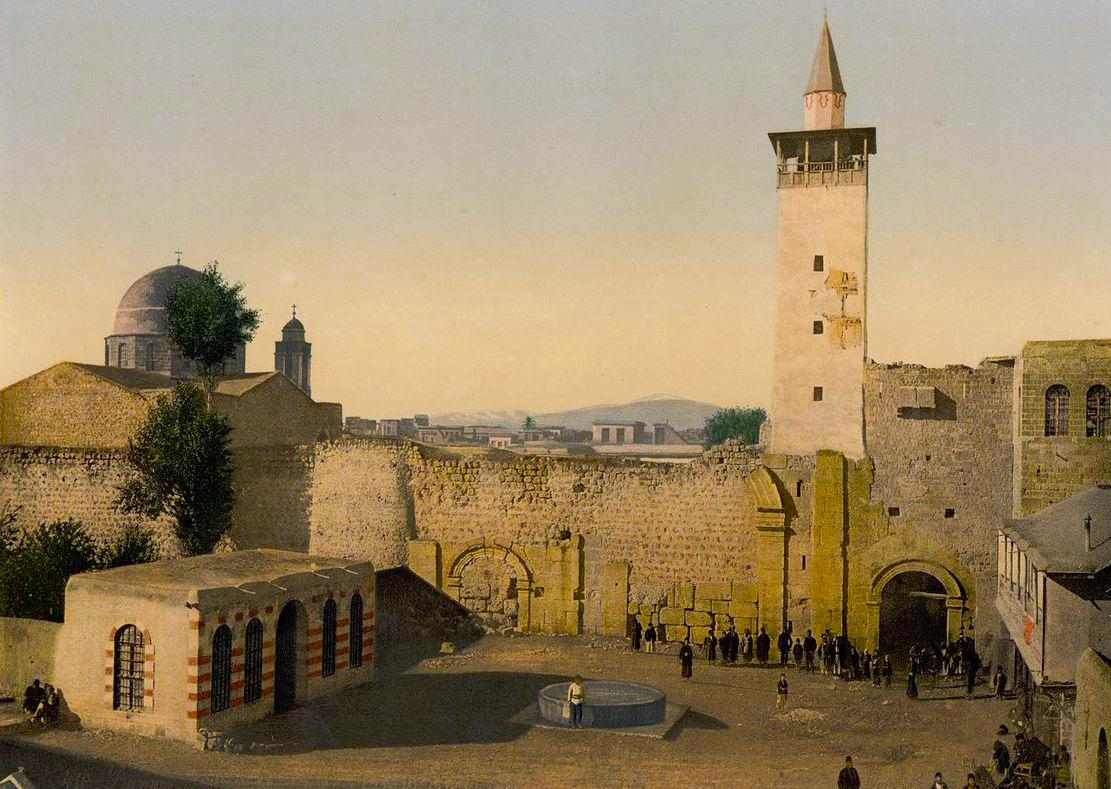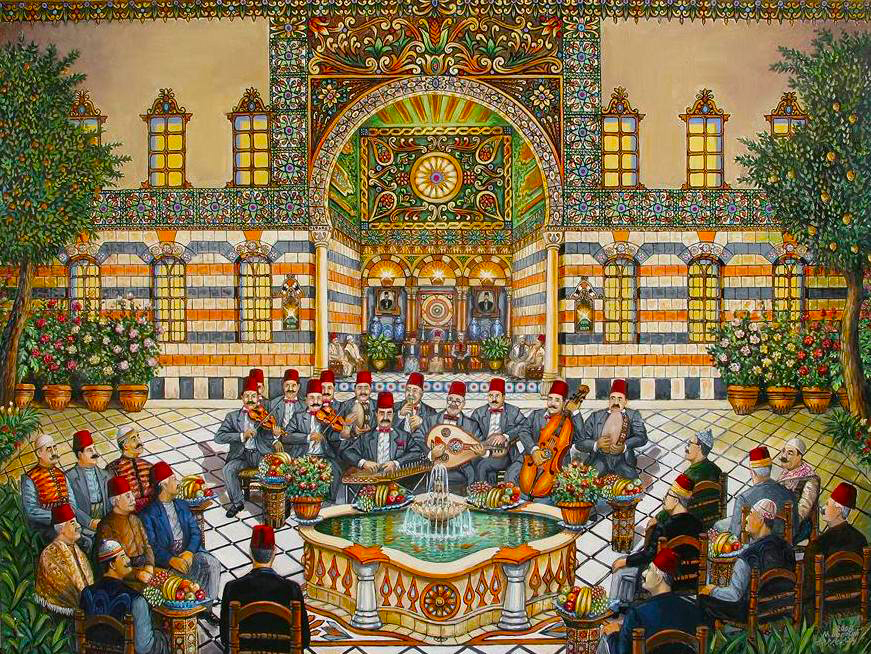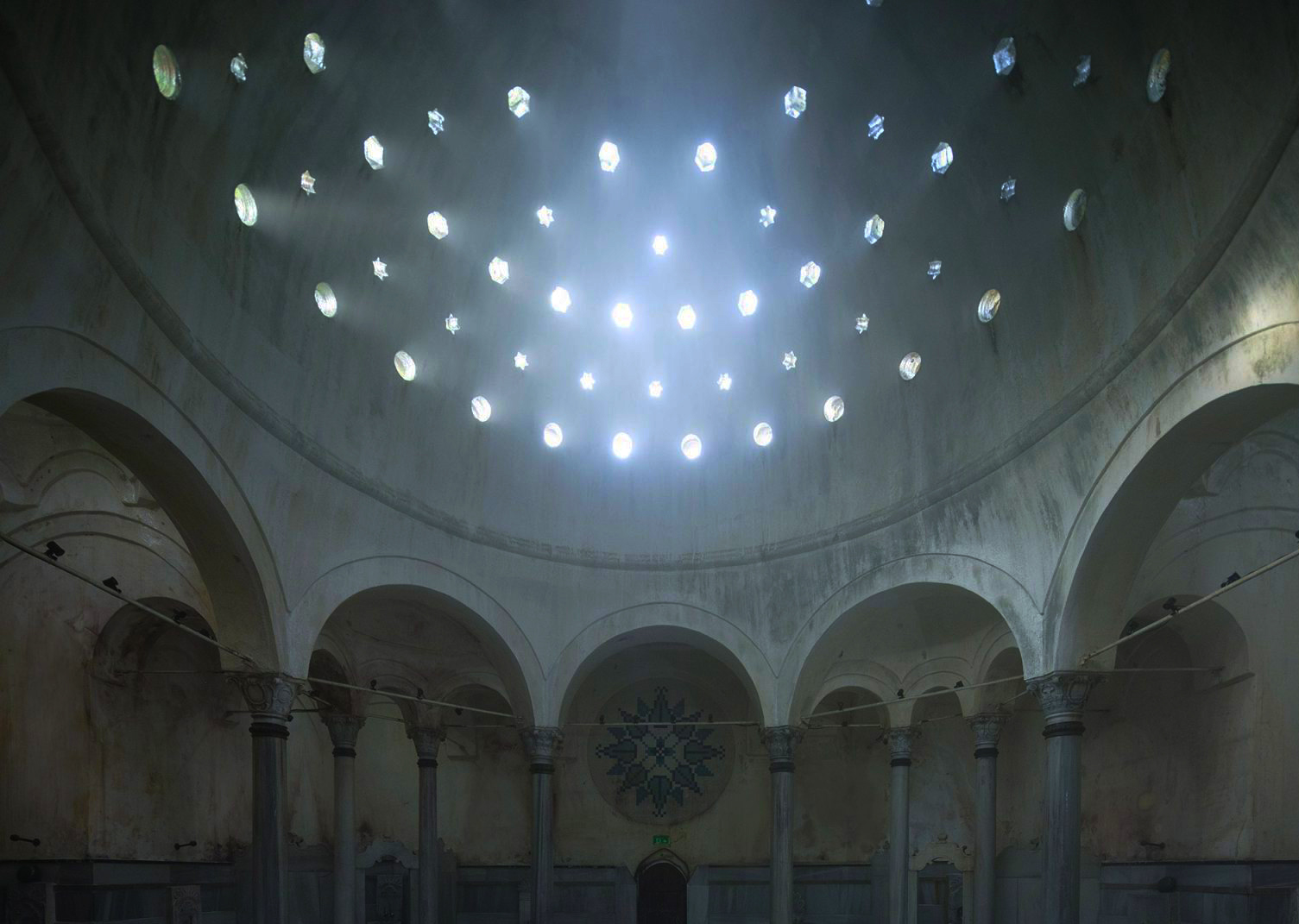Traditional Hammams in Aleppo’s Old City: A Timeless Experience of History and Healing: The Old City of Aleppo is a labyrinth of stone alleys, ancient souks, and architectural marvels. Among its most cherished gems are its traditional hammams (public bathhouses)—centuries-old sanctuaries of cleanliness, relaxation, and community life. These hammams were not just places for bathing; they were integral to the city’s social and cultural fabric, places where merchants, scholars, travelers, and locals came together for conversation, ritual purification, and well-being.
Despite the challenges of recent years, the legacy of Aleppo’s historic hammams lives on. This article explores the most famous hammams in Aleppo, what makes them special, and why they remain an important part of Syrian heritage.
The Role of the Hammam in Aleppine Life
More Than Just a Bath
In Islamic culture, personal hygiene is not only a matter of cleanliness but a religious practice. Hammams fulfilled this need in urban environments where private bathrooms were rare. In Aleppo, these bathhouses also served as places for:
- Pre-wedding rituals for brides and grooms
- Social gatherings and celebrations
- Relaxation and health, including massage and steam therapy
- Business meetings among merchants
The word “hammam” comes from the Arabic root ḥamm, meaning “to warm.” The concept dates back to Roman and Byzantine bath traditions, later refined by the Ottomans and Islamic architects.
Architectural Elements of Traditional Hammams
Traditional hammams in Aleppo usually follow a three-part layout:
- Bayt al-Maslakh (Changing Room)
A spacious, domed room with benches and lockers where guests undress and prepare for the bath. - Bayt al-Harara (Hot Room / Steam Room)
The core of the hammam, with a central heated space surrounded by niches for bathing, scrubbing, and massages. Domed ceilings with star-shaped openings allow light and ventilation. - Bayt al-Barid (Cooling Room)
After bathing, guests relax and rehydrate in a cooler area to gradually adjust before leaving.
All these sections are built with stone masonry, often with marble flooring, fountains, and finely carved decorations. Water was traditionally heated through an underground hypocaust system, using firewood or coal.
Famous Historical Hammams in Aleppo
1. Hammam Yalbugha (Yalbugha al-Nasiri Hammam)
Era: Mamluk (built in 1491)
Location: Near the Citadel of Aleppo, on the banks of the Quweiq River
Status: Severely damaged but symbolic
Perhaps the most famous of Aleppo’s hammams, Hammam Yalbugha was built by Yalbugha al-Nasiri, a Mamluk governor. It stood as a magnificent symbol of Mamluk architecture, with a massive domed ceiling and intricately carved interiors.
Before the war, it was restored and served as a popular spot for locals and tourists, offering traditional scrubs (takseel), massages, and even cultural events. Its proximity to the Citadel made it a must-visit.
Unfortunately, it was heavily damaged during the conflict, but it remains one of the most iconic hammams in Syria. Restoration efforts have been discussed, given its cultural value.
2. Hammam al-Nahhasin (The Coppersmiths’ Hammam)
Era: Ayyubid/Ottoman (12th–16th centuries)
Location: Al-Madina Souq, near Khan al-Nahhasin
Status: Damaged but partially functional or in restoration
This hammam was traditionally frequented by souq workers and craftsmen, especially from the nearby copper market (Souq al-Nahhasin). It’s smaller and more modest than Hammam Yalbugha but deeply authentic, with beautiful stonework and an intimate atmosphere.
It was one of the oldest working hammams in Aleppo and served an important role in daily life—especially before and after prayer times or special events like weddings.
3. Hammam Bab al-Ahmar
Era: Ottoman
Location: Near Bab al-Ahmar (The Red Gate), in the eastern part of the Old City
Status: Damaged
Hammam Bab al-Ahmar served as a neighborhood bath in one of Aleppo’s historic gates. It was more utilitarian than ceremonial but deeply rooted in the life of its local community. It had separate hours or days for men and women and was especially busy during the Eid holidays.
Its proximity to residential areas made it an essential service for many families who lacked private baths.
4. Hammam al-Ayyoubi
- Date: Believed to date back to the Ayyubid period (12th–13th century)
- Location: Near Bab al-Faraj, inside the Old City
- Status: Damaged but retains historic layout
Named after the Ayyubid dynasty, this hammam is one of the oldest in Aleppo. It served a mixed clientele—travelers, soldiers, and residents—and was known for its simplified but effective architectural design. Though not as decorative as Yalbugha, Hammam al-Ayyoubi is significant for its historical continuity, representing early Islamic urban development.
5. Hammam al-Zanki
- Date: Likely built during the Zengid or early Ottoman period
- Location: Near Bab Antakya, western Old City
- Status: Largely intact before the war, current status uncertain
This hammam is associated with the Zengid dynasty, a major force in Aleppo during the 12th century. It catered to both elites and locals and had a dual entrance system, reflecting Aleppo’s religious diversity (Muslim and Christian users at different times).
With unique internal stonework and well-preserved hot and cold rooms, Hammam al-Zanki was admired for its authentic, pre-Ottoman layout.
5. Hammam Hanano
- Date: Ottoman era
- Location: Al-Hanano area, on the edge of the Old City
- Status: Less known, community-based, served surrounding neighborhoods
Hammam Hanano served the residential neighborhoods around Aleppo’s eastern quarters. It was smaller than others, but essential for daily life. Its affordability and accessibility made it popular among families and workers, and it was particularly active during weddings, Ramadan, and Eid preparations.
Though not on tourist maps, Hammam Hanano represents the grassroots side of Aleppo’s bathing culture—simple, functional, and deeply loved.
What a Traditional Hammam Experience Was Like
Step-by-Step Ritual
- Arrival & Undressing: Guests would enter the maslakh, undress, and wrap themselves in a fouta (a traditional towel).
- Steam & Soak: In the hot room, pores opened and the body was prepared for cleansing.
- Scrubbing (Takseel): A professional attendant (tellak) would use a rough glove (kese) to exfoliate the skin.
- Soap Massage: Natural olive oil soap was used in a full-body massage.
- Cold Splash or Shower: After the hot room, guests cooled down with a splash or a dip in cold water.
- Tea & Relaxation: The visit ended with sweet tea, dried fruits, and sometimes shisha in the relaxation room.
This process could last 1–2 hours and was considered both a health treatment and a form of social bonding.
Restoration and the Future of Aleppo’s Hammams
War Damage and Loss
Many of Aleppo’s hammams were damaged during the civil war—some lost their roofs, others were burned or looted. However, because many of these buildings are made of sturdy stone and have deep cultural value, restoration is possible.
International and Local Efforts
UNESCO and the Aga Khan Trust for Culture have expressed interest in helping restore damaged sites. Local architects and heritage activists are documenting these hammams to preserve their memory and eventually bring them back to life.
Tourism Potential
As Aleppo gradually stabilizes, restoring and reopening these hammams could:
- Create jobs
- Revive cultural tourism
- Reconnect Aleppines with their traditional rituals
- Promote wellness tourism through authentic Middle Eastern spa experiences
Tips for Visiting Hammams in Aleppo (When They Reopen)
- Check schedules: Some hammams have separate hours or days for men and women.
- Bring essentials: A towel, flip-flops, and clean undergarments. Soap and scrubbing tools are often provided.
- Respect privacy: Photography inside is usually prohibited.
- Hydrate: Drink tea or water after steaming to avoid dehydration.
Final Thoughts
Aleppo’s hammams are not just bathhouses—they are living monuments to an era when public health, architecture, and social life were beautifully intertwined. Whether it’s the grand Hammam Yalbugha or the humble neighborhood hammams, each one tells a story of a city that once pulsed with diversity, dignity, and ritual.
As efforts to restore the Old City of Aleppo continue, these historic hammams stand as symbols of resilience and renewal. One day, tourists and locals alike may once again hear the sound of water trickling in domed chambers, the laughter of friends relaxing after a bath, and the echoes of centuries past—preserved in steam and stone.



